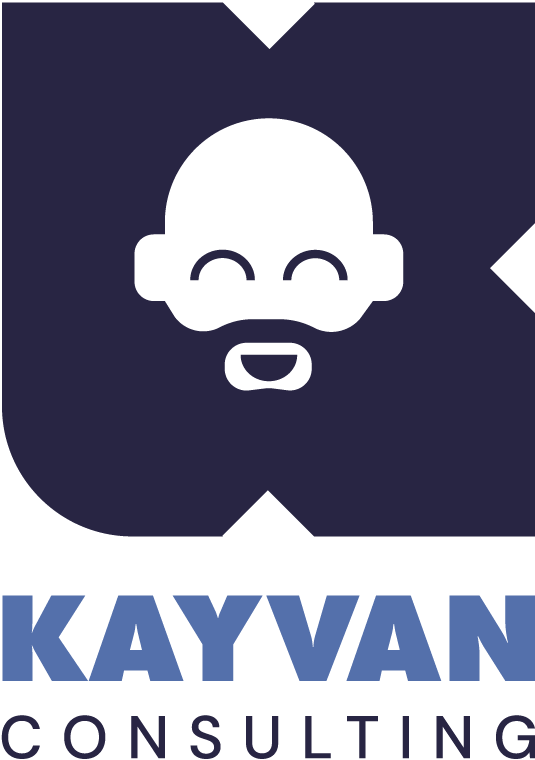Introduction: Why Hiring Mistakes Are More Expensive Than You Think
For many companies, hiring feels like a gamble. A candidate seems great on paper, performs well in the interview, and yet, a few months later, they’re underperforming, disengaged, or leaving altogether. The cycle repeats, leading to frustration, wasted time, and financial losses.
It’s easy to blame the job market or candidates for a hiring misstep, but often, the issue lies within the company’s own process. Most common hiring mistakes aren’t dramatic failures; they’re subtle missteps that accumulate into inconsistent evaluations, rushed decisions, and missed red flags.
The solution? A more structured, deliberate, and human-centered approach to hiring. Here’s how to avoid the five most common mistakes that lead to poor hiring outcomes.
Table of Contents: 8 Common Hiring Mistakes:
1) No Process, No Training: A Recipe for Bad Hires
Many businesses make hiring decisions without a clear, repeatable process. Instead of following a structured approach, they rely on gut instinct, leading to inconsistent results and frequent mis-hires.
A lack of standardized interview training means hiring managers often don’t know how to properly evaluate candidates. Some interviewers dominate conversations, others fail to ask meaningful follow-ups, and many unknowingly introduce bias into the process. This not only leads to hiring the wrong people but also damages the company’s reputation—word spreads quickly when candidates experience disorganized or unprofessional interviews.
How to Fix It:
- Implement structured interview processes. Create a clear hiring framework that outlines the key steps for evaluating candidates.
- Train hiring managers. Ensure interviewers know how to assess candidates consistently and fairly.
- Standardize candidate evaluations. Use scorecards to reduce bias and make fair comparisons across applicants.
Get training for your hiring team to improve interview consistency and decision-making.
2) Poor Interview Questions That Don’t Reveal Anything Useful
Too many interviewers ask vague, theoretical, or generic questions that don’t provide real insights into a candidate’s skills.
For example, asking “How would you handle a difficult customer?” leads to a rehearsed, hypothetical response that tells you nothing about how the candidate has actually handled real situations. Candidates, naturally, try to frame themselves in the best light—so their answers often sound impressive but lack depth.
A better approach is to ask for real-life examples:
❌ “How would you handle a high-pressure situation?”
✅ “Tell me about a time you had to meet a difficult deadline. How did you handle it?”
Even good questions can fall flat if the interviewer doesn’t know how to follow up properly. Without proper training, hiring teams miss out on opportunities to drill down and uncover how candidates think, react, and learn from experience.
How to Fix It:
- Use behavioral interview techniques. Ask candidates to provide specific examples from their past experiences.
- Train interviewers to probe deeper. Don’t settle for surface-level answers—ask how, why, and what happened next to get a full picture.
- Ditch theoretical questions. Focus on real-world experiences, not hypothetical responses.
Simple training to replace this method of questioning with historical, evidence-based questions can aid the hiring team in getting more honest, real-world examples. Harvard Business Review highlights that behavioral questions are far better at predicting future job performance than theoretical ones.
Learn more about behavioral interviewing techniques.

3) Bad Interview Structure and Poor Time Management
Some interviews feel like a chaotic mess—jumping from topic to topic with no clear flow. Others drag on too long or get cut short, leaving the hiring team with an incomplete picture of the candidate.
Without a well-structured interview, teams may:
- Run out of time before asking key questions.
- Spend too much time on small talk or irrelevant topics.
- Fail to leave space for the candidate to ask their own questions.
How to Fix It:
- Plan interviews in advance. Allocate time for each section of the conversation (e.g., introductions, experience discussion, situational questions, candidate Q&A).
- Stick to a script. While interviews should be conversational, a loose script ensures all key points are covered.
- Respect time limits. Avoid running over or rushing through important topics.
A structured interview process keeps things on track and ensures that every candidate gets a fair, consistent experience. Learn how to create the perfect structured interview process.

4) The Wrong People Are on the Hiring Team
Not everyone who conducts interviews should be doing so.
Some hiring panels are made up of people lacking the skills to assess candidates effectively. Others may have strong opinions but introduce bias into the process. Even worse, some hiring panels have people present whose input isn’t really relevant to the hire.
Common mistakes include:
- Too many people in the room. A large panel can overwhelm the candidate and lead to disjointed conversations.
- Untrained interviewers. If team members don’t know what to ask or how to evaluate responses, their input may be unhelpful.
- Personal bias affecting decisions. Without clear criteria, decisions may be based on personal preferences rather than job-related skills.
How to Fix It:
- Keep the interview panel small and relevant. Only include people who directly impact hiring decisions.
- Train interviewers on bias awareness. Recognizing unconscious bias helps hiring teams make fairer decisions.
- Ensure every interviewer understands the role. If someone doesn’t know what to look for, their feedback won’t be useful.
A great hiring team isn’t just a collection of senior employees—it’s a group of people who understand the role and know how to assess candidates effectively.
5) Ignoring the Candidate’s Emotional State
Interviews are inherently stressful. No matter how welcoming we try to be, candidates are still affected by nerves—and those nerves show up in different ways. If we don’t account for this, we end up evaluating how someone handles an interview rather than how they’d perform in the job.
For some candidates, stress manifests as shutting down. They may:
- Clam up and struggle to articulate their thoughts.
- Stutter or lose their train of thought.
- Sweat, fidget, or show visible nervousness.
For others, stress pushes them in the opposite direction—they overcompensate. Instead of shutting down, they:
- Talk too much, rushing through answers without real depth.
- Try too hard to sound confident, coming across as arrogant.
- Make exaggerated claims about their experience or abilities.
Neither reaction gives us a clear picture of who the candidate really is. If someone underperforms due to nerves, we risk overlooking a great hire. If someone oversells themselves due to stress, we might mistake overconfidence for actual ability.
How to Fix It:
- Monitor their emotional state. If a candidate is shutting down, guide them back into the conversation with simpler follow-ups. If they’re overcompensating, slow things down and ask for specifics.
- Adjust the tone when needed. If someone is nervous, a little reassurance can help. If someone is overly confident, calmly probing for details will reveal the truth.
- Make space for them to reset. Sometimes, a small pause or a rephrased question is all it takes to bring a candidate back to center.
Interviews should be about uncovering who someone actually is—not how well they handle pressure in a single meeting. This being one of the most common hiring mistakes means that as interviewers, our job is to guide candidates toward a fair, honest conversation so we can make the best decision.
A great interview doesn’t just evaluate candidates—it gives them a reason to want to work for you.
6) Misunderstanding Culture Fit: It’s Not About Hiring People You’d Get a Beer With
Many companies overemphasize “culture fit” when hiring, believing it’s one of the most important factors in choosing a candidate. And while it’s true that aligning with company culture matters, the way businesses go about assessing it is often flawed.
The mistake? Hiring based on gut feeling—choosing people who just “feel” like they belong. This often leads to hiring teams selecting candidates who are similar to them in personality, background, or communication style rather than those who will actually thrive in the company’s work environment.
Culture Fit Isn’t About Personality—It’s About Adaptability
People behave differently in different settings.
- How someone interacts at work is different from how they act at home.
- The way they socialize with friends isn’t the way they communicate with colleagues.
- Professional behavior isn’t a fixed personality trait—it’s an adaptable skill.
The real question isn’t, “Do they naturally fit in?”—it’s, “Can they adapt to the way we work here?”

What Hiring Teams Get Wrong
A strong company culture isn’t about everyone being the same—it’s about shared behaviors and expectations. Yet many companies fail to define their culture clearly enough for candidates to know what they’re actually stepping into.
If you can’t confidently tell a candidate:
✔️ How your team communicates and collaborates
✔️ What behaviors are valued and expected
✔️ What’s okay and what’s not okay in your workplace
✔️ Why the company exists and what it stands for
Then how can they assess whether they can adapt to it? And how can you fairly assess if they will?
How to Fix It:
- Define company culture beyond vague buzzwords. Saying your culture is “fast-paced” or “collaborative” means nothing if candidates don’t understand what that looks like in practice.
- Make expectations clear in interviews. Instead of hiring people who feel like they fit, give candidates a transparent view of your culture and let them decide if they can adapt.
- Focus on shared values and behaviors, not personality. Culture should be built on common ways of working, not on hiring people you’d want to grab a drink with.
A great hire isn’t someone who naturally fits in—it’s someone who knows what’s expected and is willing to align with it while bringing their own strengths to the table.
7) Rushing to Fill a Role (and Paying for It Later)
Hiring teams often feel pressure to fill roles quickly—especially when a vacancy is slowing down business operations. But rushing the process almost always leads to regret.
Common signs of a rushed hire include:
- Skipping key steps (like reference checks or second-round interviews).
- Ignoring red flags because “we just need someone now.”
- Lowering the hiring bar just to get a seat filled.
A bad hire doesn’t just cost time and money—it affects team morale, productivity, and sometimes even customer experience. SHRM estimates that the cost of a bad hire can be up to five times the employee’s annual salary when factoring in lost productivity, recruitment fees, and team disruption.
How to Fix It:
- Treat hiring like an investment. A little extra time upfront saves way more time and money down the road.
- Keep a strong candidate pipeline. Always be networking and identifying potential hires—even when you’re not actively hiring.
- Use temporary support if needed. If an empty role is hurting the business, short-term solutions like freelancers or contractors can buy you time.
8) Not Selling the Role to the Candidate
Many hiring teams focus so much on evaluating candidates that they forget the candidate is also evaluating them. The best candidates don’t just want to be chosen—they want a reason to say yes to the offer.
Companies that fail to sell the role often:
- Assume top candidates will accept just because they’re offered the job.
- Focus too much on grilling candidates and not enough on making them excited about the opportunity.
- Lose great candidates to competitors who do a better job of communicating why someone should work for them.
How to Fix It:
- Be clear on what makes this role exciting. What growth opportunities does it offer? What impact will the candidate have?
- Give candidates a great experience. A smooth, respectful, and engaging hiring process makes people want to work with you.
- Showcase company culture honestly. Highlight what makes your workplace great—without overpromising or sugarcoating.
The best candidates don’t just want to be chosen—they want a reason to say yes. LinkedIn’s Talent Trends report found that 75% of candidates research a company’s employer brand before applying, meaning how you present yourself in the hiring process directly affects who you attract.
Final Thoughts
Hiring mistakes don’t just lead to a bad hire—they create ripple effects across the entire organization. A weak hiring process wastes time, lowers team morale, increases turnover, and makes it harder to attract top talent in the future.
The good news? Most hiring mistakes are completely avoidable with the right structure, training, and mindset. By focusing on clear processes, better interview techniques, and a strong but adaptable company culture, hiring teams can consistently bring in the right people.
Great hiring isn’t just about finding someone who can do the job—it’s about creating a process that allows the best candidates to shine. A structured, fair, and well-thought-out approach ensures that you’re making hiring decisions based on actual ability, fit for the role, and long-term potential—not just gut feelings or a rushed timeline.
If you’re serious about improving your hiring process, consider getting practical interview training for your team to remove guesswork and ensure your hiring decisions are based on the right criteria.
1) What are the biggest hiring mistakes companies make?
The most common hiring mistakes include:
Not having a structured process, leading to inconsistent decisions.
Asking weak or theoretical interview questions that don’t uncover real insights.
Poor interview structure and time management, causing rushed or incomplete evaluations.
Choosing interviewers poorly, leading to bias or ineffective assessments.
Ignoring the candidate’s emotional state, which can distort their true abilities.
Misunderstanding culture fit, hiring based on personality rather than shared values and behaviors.
Rushing to fill roles, leading to hires that don’t work out.
Failing to sell the role, causing strong candidates to accept offers elsewhere.
How can we make interviews more effective?
To improve your interviews:
Use a structured approach. Every interview should follow a consistent format with clear evaluation criteria.
Ask behavioral questions. Focus on real experiences rather than hypothetical scenarios.
Train interviewers properly. Make sure everyone knows how to assess candidates fairly and effectively.
Be mindful of nerves. Adjust the interview style to help candidates give their best responses.
Sell the role to the candidate. Make sure they leave the interview excited about the opportunity.
How can we reduce bias in hiring?
Use standardized interview questions to ensure every candidate is evaluated on the same criteria.
Train hiring teams on unconscious bias, so they can recognize and minimize personal preferences in decision-making.
Introduce structured scorecards, so decisions are based on objective evidence rather than gut instinct.
Expand your definition of culture fit to focus on shared behaviors, not personality similarities.
What’s the best way to balance speed and quality in hiring?
While hiring quickly is important, a rushed process leads to bad hires. To balance speed and quality:
Always have a candidate pipeline. Build relationships with potential hires before you need them.
Use clear role descriptions. Knowing exactly what you need helps speed up evaluations.
Consider temporary solutions. If a vacant role is causing problems, hiring a contractor or freelancer can give you breathing room.
How do we create a great candidate experience?
Communicate clearly. Candidates should know what to expect at every stage.
Respect their time. Keep the process efficient and don’t drag things out unnecessarily.
Be transparent about company culture. Let candidates know what they’re walking into so they can make an informed decision.
Give them a reason to say yes. If you want top talent, you need to show why your company is the right place for them.


